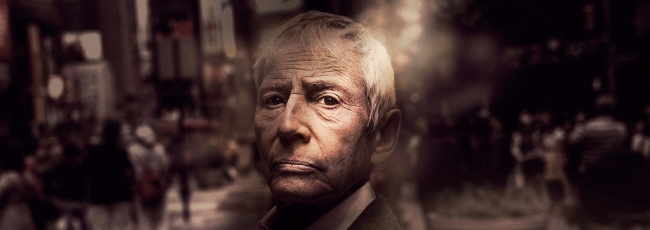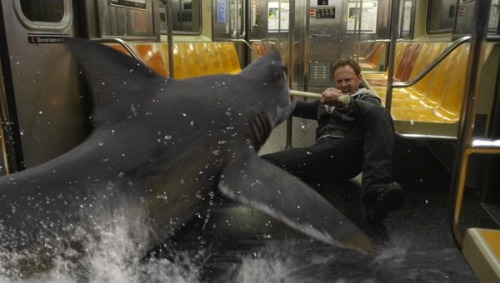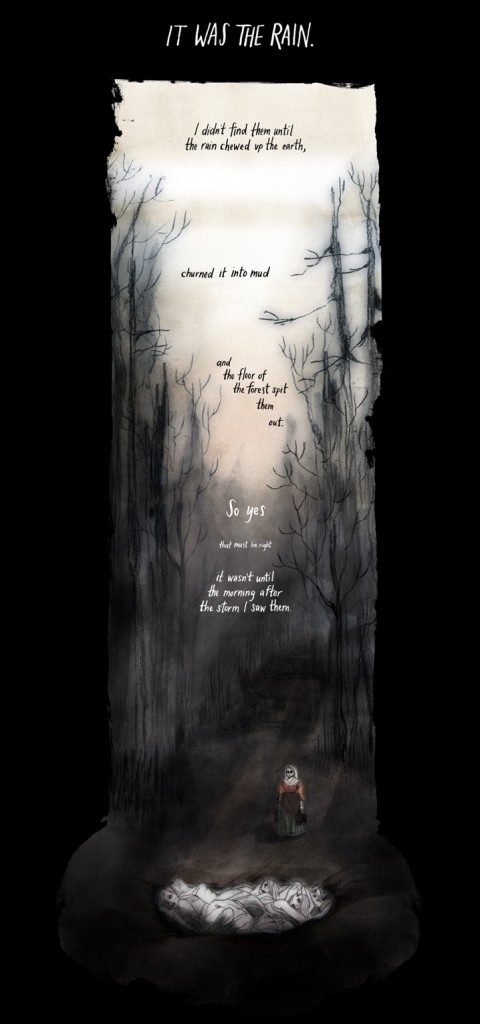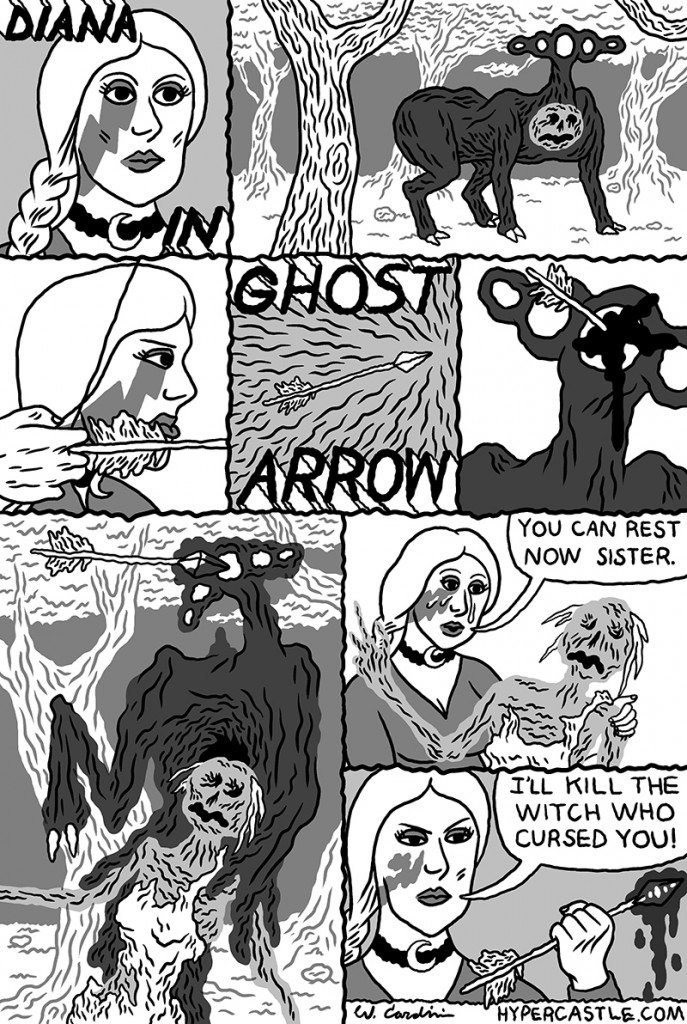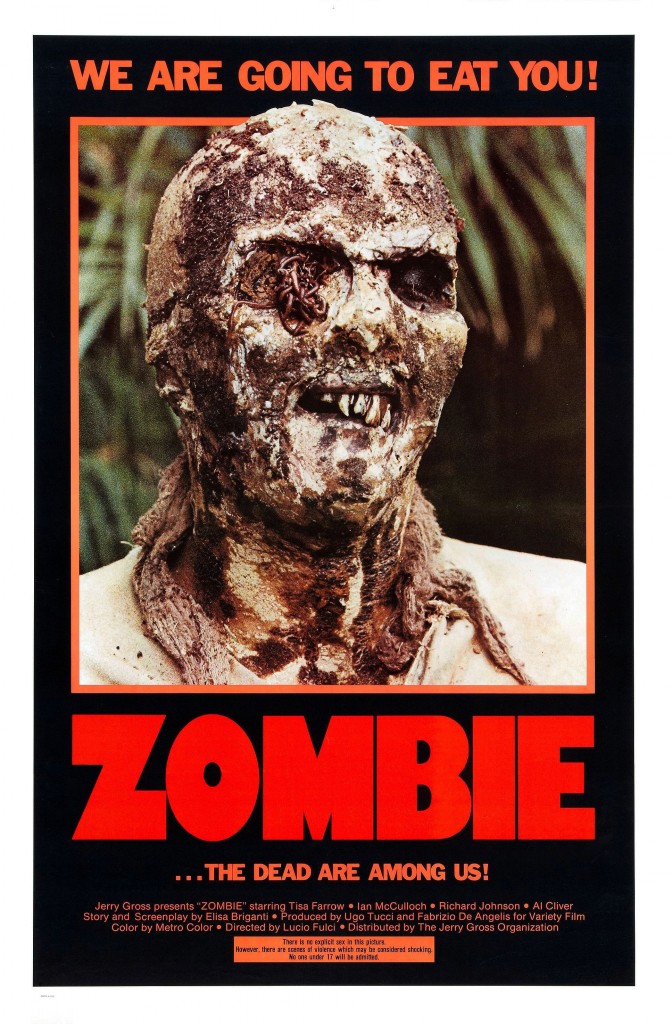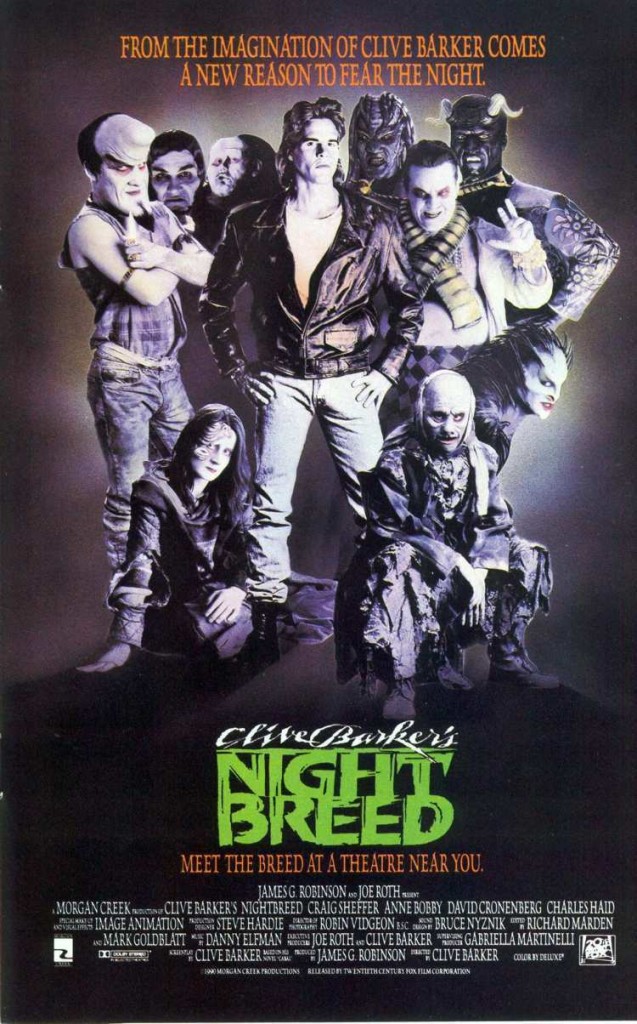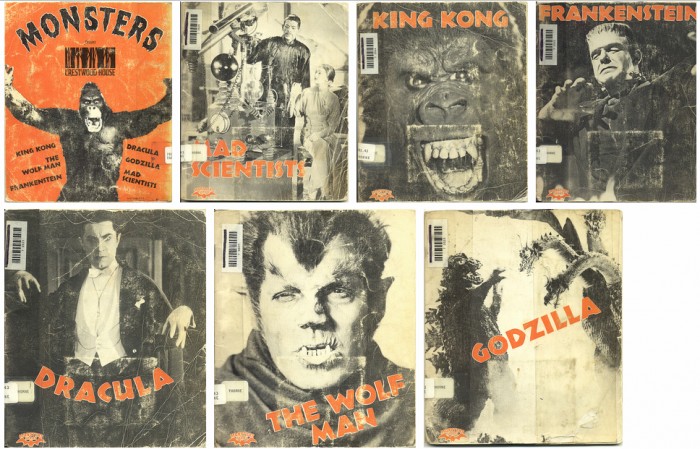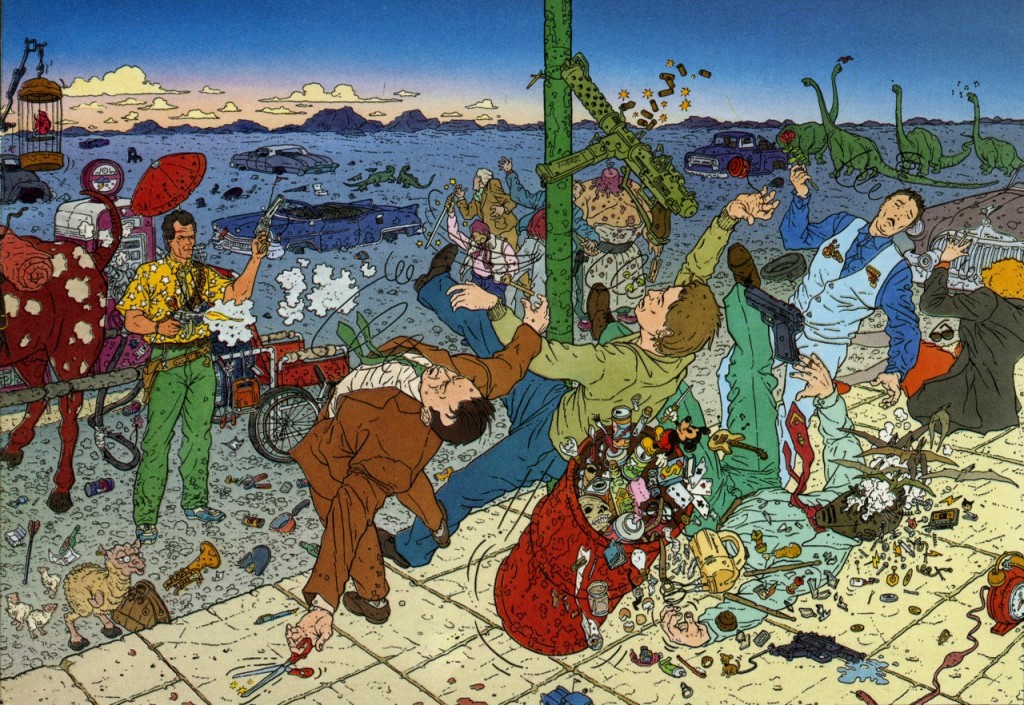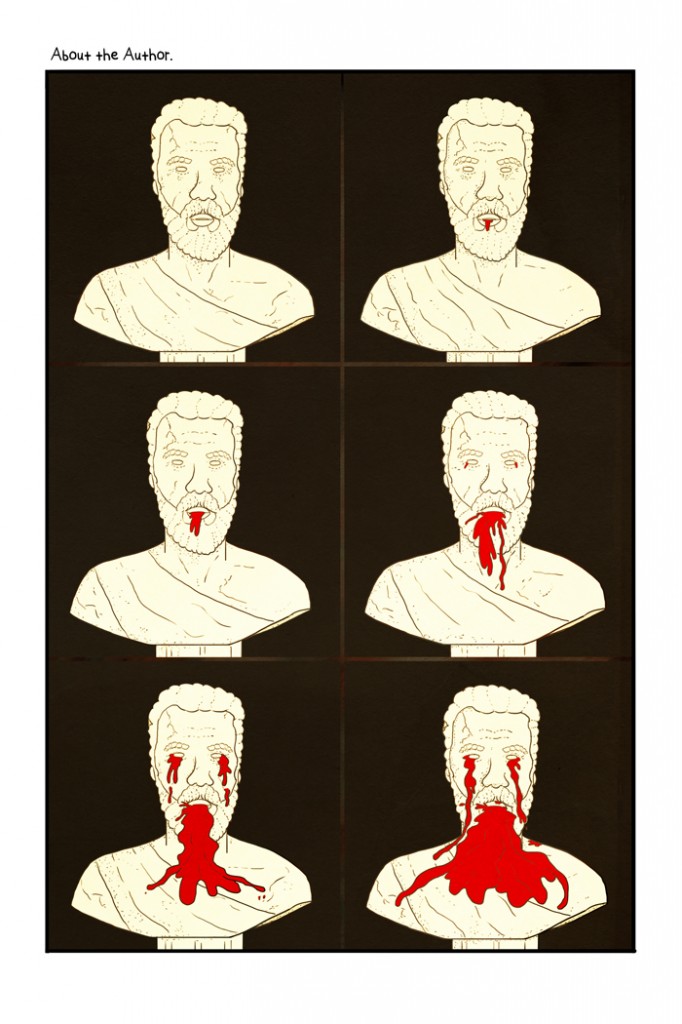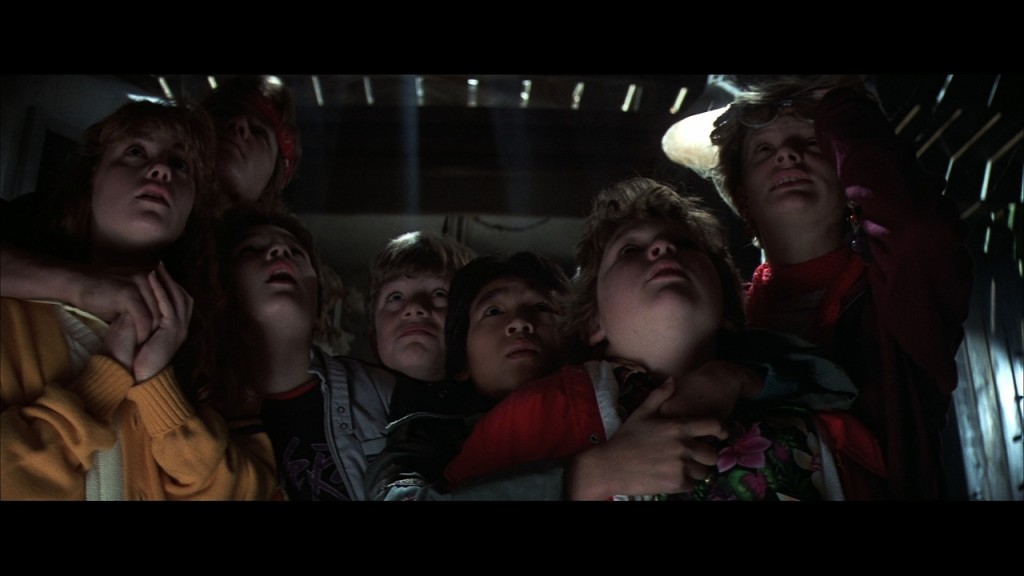Posts Tagged ‘movie reviews’
This weekend I saw an okay movie called “Mad Max: Fury Road”
May 20, 2015I liked it fine. It wasn’t bad, and it was never mindless which sets it a cut above 90% of action blockbusters, but it wasn’t great. It was okay.
And it was spectacular, but the spectacle added nothing but scale. This is particularly true of the many chase sequences, which despite the well-publicized commitment to practical stuntwork had little of the white-knuckle claustrophobic about-to-break intensity of The Road Warrior. It was The Road Warrior but MORE, which in the end meant less. To be fair, The Road Warrior is flawless, a wholly original and alien vision, poetry in motion, probably the greatest action movie ever made, one of the best movies of any kind. Fury Road feels like George Miller took his masterpiece and added a bunch of unconvincing prosthetics to it, which in a sense he literally did.
To me the enthusiasm for Fury Road’s fantastical grandiosity is an echo (perhaps via influential cartoonist Brendan McCarthy, who storyboarded the film back in the day) of recent years’ fixation within the alternative/indie-comics world on Moebius and similar genre-comics artists who combine great technical ability with vivid visual imaginations; this attempt to realign the canon away from the Ware / Clowes / Doucet / Brown / Hernandez / Spiegelman / Crumb axis has been baleful for the artform in most every particular. (Simon Pegg was right.)
Miller also gave it an unambiguously happy ending, a big step back from the marvelous, singularly simultaneous gutpunch and uplift of The Road Warrior’s conclusion. A happy ending of this sort is fun, don’t get me wrong, but you can’t live off it.
Moreover, the sociopolitical praise for it, as is usually the case when people go berserk for giant pop-culture artifacts, is further evidence of the soft bigotry of low expectations. (Anita Sarkeesian was right.) You’ll be happy to hear that Mad Max: Fury Road takes a bold stand against the enslavement of women as broodmares by insane albino warlords, and that tough women with hip haircuts shoot guns in it. It’s a strange sort of progressivism that lionizes violence so long as it’s sufficiently badass and nominally egalitarian in its participants. It leaves us wishing Game of Thrones into the cornfield while demanding a Black Widow action figure in every pot.
Everyone in it was good, though, I’ll give it that as well. Tom Hardy is a god, Nicholas Hoult seems a very lively talent, Charlize Theron was rock solid. Like I said, it was fine, I enjoyed it I guess. It’s just that the existence of The Road Warrior renders it superfluous.
Movie Time: Ex Machina
May 8, 2015spoilers below
I’ve never been interested in science fiction about “what it means to be human.” That is not a question that has ever once occurred to me to ask myself, much less interested me in being asked by others. I think I’ve got a pretty good grip on it, thanks! Like, what does it mean to be human? You’re soaking in it.
Moreover, I’m so likely to err on the side of caution with regards to the issue of “killing” an artificially intelligent machine that this facet of the subgenre holds no interest for me either. I’m a vegetarian pacifist who opposes the death penalty – don’t make a machine that would feel bad about getting unplugged. Boom, done.
So that’s problem number one for Alex Garland’s Ex Machina, as far as I’m concerned.
Problem number two is that while no one likes a good Bluebeard story more than I do (with one possible exception), this one tried to have its cake and eat it too with regards to the sexy naked lady robots in the evil inventor’s death closet, and the larger issue of male privilege and misogyny the evil inventor’s death closet represented. Obviously the film intends you to find the sexy naked lady robots creepy and the evil inventor’s behavior toward them loathsome, but the parade of fabulous nude bodies that ate up the film’s third act embodied (wink) the very problems it was ostensibly intended to critique. The tell here was the fact that Ava, the main sexy naked lady robot, stood around nakedafter she’d defeated the two human men involved in the story and was free to think and act on her own. At that point, the only male calling the shots was the director.
The final problem is that despite their primacy in the narrative, the two male characters were somehow still underexplored. As a subset of points one and two, I feel like I’ve had my fill of evil sexy robot lady stories for this life, so Ava, in the end, was just not that compelling a monster to me. You know who was, though? Nathan, the genius search-engine gazillionaire and evil inventor. If you’ve ever worked for a company owned by one or two very wealthy people, you know the unique horror of realizing that another human being can pretty much literally buy and sell you, completely upending your life before going home to their own that afternoon. There were feints, and more than feints, in this direction throughout the film, but in the end he was supplanted by his much less fearsome creation.
The awful fate reserved for his opposite number, Caleb, didn’t jibe either. How could it? It’s a plot point that Caleb was selected by Nathan to participate in the Turing testing of his evil sexy robot lady precisely because he’s a good-hearted cipher – kind and caring, but with nothing connecting him to the world at large. There’s no way for the horrific events of the film to feel like they are part of an emotional economy originating in that character, since he has so little in the bank.
Yes, it looks nice, but any knucklehead can make a stylish science fiction film look nice. That’s kind of their thing.
But the music, by Portishead’s Geoff Barrow and his frequent collaborator Ben Salisbury, is overwhelming and tactile; it’s terrific. So is Oscar Isaac, so good at turning slightly-off creeps into these weird magnetic presences on film. And the dance scene? Fucking phenomenal. It’s the one part where the spectacle doesfeel like it sprang forth out of the psychic grotesquerie of this person’s brain. In that sense I guess it’s basically the “In Dreams” scene from Blue Velvet – <Morpheus voice> what if I told you this sexy, stylish psychological thriller was indebted to David Lynch? – but hey, I’ll eat it.
Marvel Movie Catch-Up Thoughts
May 6, 2015In the last three days I watched the last four Marvel movies.
Thor: The Dark World (dir. Alan Taylor): Wafer-thin characters and worldbuilding offset by charismatic performances and cheeky action sequences. I don’t quite understand the white dwarf sexual gravity exerted by Tom Hiddleston on large segments of the audience, but he and Chris Hemsworth are clearly having a ball every minute they’re on set. Same with Kat Dennings and Stellan Skarsgard and even, in this one at least, Natalie Portman, who’s only ever been good in Closer (and I guess Leon) but is fun here.
Captain America: The Winter Soldier (dir. the Russo Brothers): Exciting, well-staged action from start to finish — very much the cinematic child of the Ed Brubaker run on the comics, where the characters felt solid and rooted in physics but operating at the absolute peak allowed, like they rolled a 20 for every saving throw. Not street level, super-street level, if that makes sense. Chris Evans is shockingly likeable in that role, which is hard for both him as an actor and that character if you’re a commie like me. I’ve never bought Johansson as Black Widow, but okay, fine. Mackie was fun as Falcon, Redford was Redfordian as the evil suit, and I liked the future Crossbones guy. A solid message regarding the out-of-control security apparatus, too, that wasn’t undermined by Black Widow’s “you need us” testimony at the end the way I’d been led to believe it was. Best of the lot.
Guardians of the Galaxy (dir. James Gunn): A decent enough tonal and design throwback to ‘80s/early ‘90s sci-fi/action/popcorn fare — the Kyln prison looked like something out of Total Recall — but it overshot fun and hit shrill time and again. The fight scenes were poor, like a sort of warped version of the Captain America ones: All of these characters are way powered up, yet the nature of the story required them to be brawlers, so you were left with this down-and dirty fight choreography that just revealed how phony the physical effects were. And none of these lovable losers were as lovable as the film needed them to be, or clearly thought they were. How about that Chris Bautista though, huh? Funny stuff. Though that reminds me: Over and over again, the Marvel movies go to the most generic-looking blue-skinned-cosmic-type villains in the whole Marvel Universe. Laufey, the Frost Giants, Malekith, Kurse, the Dark Elves, Ronan, the Sakaarans, the Chitauri — it’s like they took their pointers from Guillermo Del Toro’s still-baffling decision to boil the entire Mike Mignola bestiary down to a shitty redesign of the frog monsters for Hellboy.
Avengers: Age of Ultron (dir. Joss Whedon): Nowhere near as confusing as advertised. Nowhere near as sociopolitically noxious, either; jesus, if ever there were an illustration of my Golden Rule of Internet Argument — interpret with minimum good faith, attack with maximum rhetorical force — it’s the litany of charges leveled against this relatively innocuous film, that’s for fucking sure. Whedon’s an awful director of action, you can never tell what the physical stakes are for any particular move or blow or strike or dodge. But he’s good with teamwork, with selling the idea of this group as a group. With the exception of that cornball farm shit back at Hawkeye Acres, all the personal-trauma stuff worked very well too. James Spader was very funny as Ultron, and Paul Bettany’s Vision reminded me of something I’ve heard from many older superhero fans, which is that once upon a time the Vision was the top-dog “cool” Marvel character, like Wolverine has been ever since. Sure, I can see that. Like all Marvel movies, even the best, it’s almost aggressively bereft of style, so the emphasis on charm is a necessary saving grace.
“Clear” and Present Danger: Alex Gibney on His Bold Scientology Doc
March 19, 2015Though it helps humanize many current and former believers, Going Clear pulls no punches against Scientology’s biggest “celebrity megaphones” — especially its superstar public face, Tom Cruise. Both the book and film allege that Cruise, a close friend of Miscavige (who was the best man at the actor’s wedding), has benefited for years from a labor force of Sea Org clergy members. “I’m singling him out,” Wright says. “More people got interested in Scientology because of Tom Cruise than any other individual, and he knows what’s going on. He could effect change, and it’s on his shoulders that he should.”
Gibney is harsher still. “For [Cruise] not to denounce, or at least investigate, what’s going on seems appalling to me,” he says. “He gets a lot of money and a lot of privilege from a lot of fans, and the idea that allows the vulnerable to be preyed upon in his name seems reprehensible.” In fact, Going Clear claims that Cruise’s own ex-wife, Nicole Kidman, fell victim to Scientology’s excesses herself. According to high-ranking defector Marty Rathbun, the Church wiretapped Kidman as part of a multifaceted campaign to drive the couple apart when Miscavige felt she was pulling him away from his faith. Even to readers of Wright’s book, this is breaking news.
“That was something Marty told me in my interview,” Gibney says. “When he spoke to Larry for the book, emotionally, he still had one foot in the Church. [Rathbun] had been a key enforcer for them. To unravel those big lies takes years, and to undo the psychological damage that was done to him by the Church is a slow healing process. He was able to say things now about how aggressive the Church was, in terms of trying to get Cruise back, that he might not have been willing to say before.”
I interviewed Oscar and Emmy–winning director Alex Gibney, Pulitzer-winning journalist Lawrence Wright, and high-ranking Scientology defector Mike Rinder about thir upcoming HBO documentary Going Clear: Scientology and the Prison of Belief for Rolling Stone. I’ve been working on this for a long time, and I hope you enjoy reading it.
The Perfect (Spoiler!) Crime: Art, Justice, and “The Jinx”
March 16, 2015I wrote a lengthy, pretty much unexcerptable piece on The Jinx for the New York Observer in light of last night’s finale and the surrounding news stories. It touches on Serial, Capturing the Friedmans, Mea Maxima Culpa, Going Clear, Gimme Shelter, The Thin Blue Line, America’s Most Wanted, True Detective, Goofus & Gallant, spoiler alerts, hubris, justice, and art. I’m proud of it and I hope you enjoy it.
The 50 Best Sci-Fi Movies of the ’70s
January 14, 201518. ‘THX 1138’ (1971)
As visually and sonically stunning as anything George Lucas would later do in a galaxy far far away, his future-fascistic nightmare is a pure product of the decade’s New Hollywood renaissance, exploring sex, drugs, mind-numbing television, governmental malfeasance, and both the necessity and futility of rebellion. Robert Duvall is quietly tremendous as the movie’s equivalent of 1984‘s Winston Smith. It’s not just a film, it’s a jumping-off point for an alternate universe in which George Lucas’s body of work veers closer to Sixties cerebral sci-fi than Thirties serials.
“What’s wrong?” I contributed a couple of items to Rolling Stone’s list of the 50 Best Sci-Fi Movies of the ’70s.
They said you were hot stuff: on the “Baby’s On Fire” sequence from Velvet Goldmine
January 5, 2015I Was a Teenage Velvet Goldmine Skeptic. Not quite teenage, I suppose — I’d already turned 20 by the time of the film’s autumn 1998 release — but my musical mindset was still adolescent in essence. Precariously poised between poseurs and mainstream morons, I believed, there existed a sweet spot of authentically alternative art, of real rock and roll rebellion. This was a place you could live, provided you worked relentlessly to refine your taste to its essentials, and then never, ever fucking budged. One and a half post-poptimism decades later I’m sure I don’t need to tell you how needlessly dreary and exhausting an approach this is, but my own Pauline conversion was still a few years in the future. That road to pop-cultural Damascus had many side streets. But if you were to retrace the route — starting with My First Pop Divas Kylie and Beyoncé, working back through electroclash and the Grand Theft Auto: Vice City soundtracks, traversing all the ‘80s pop and ‘70s rock I’d never before gone near, and converging at David Bowie, the artist whose breathless, liberating adoption and deletion of influences and imagery at opened up my avenues to all of the above — the road would begin with a chance late-night Cinemax channel flip and my second encounter with Todd Haynes’s glam fantasia Velvet Goldmine. It’s no exaggeration to say that that viewing changed my life. The only thing it had in common with my first viewing of the film — a head-scratching, yawn-suppressing affair in the campus art-house during its brief bomb of a theatrical run, at which I pronounced it an overinflated, pointlessly complex dud that committed the cardinal sin of not rocking hard enough — was this: I loved the “Baby’s On Fire” sequence, the movie’s centerpiece, its beating heart, its throbbing loins.
Famously, Velvet Goldmine is to David Bowie what Citizen Kane (from which it stole its structure) is to William Randolph Hearst. To use a more recent example, and a more accurate one given how both films center a fictional, emotionally overwhelming relationship between two men, it is to Bowie what The Master is to L. Ron Hubbard. In place of Joaquin Phoenix’s giggling alcoholic damage case, VG puts forward Ewan MacGregor’s American rock’n’roll animal Curt Wild as the foil to its central celebrity stand-in, Jonathan Rhys Meyers’s Brian Slade. Though primarily an Iggy Pop manqué, Wild will, throughout the course of the movie, incorporate elements of Lou Reed’s biography, Oscar Wilde’s name, Kurt Cobain’s name andlooks, and Bowie’s own post-glam Berlin period. The moniker for Meyers’s Bowie figure similarly references fellow glitter luminaries Brian Eno, Bryan Ferry, and the band Slade; if we were to pick apart “Maxwell Demon and the Venus in Furs,” Brian’s alien-messiah persona and his house band, we’d be here all night.
This Russian nesting-doll layering of references to icons of rock, film, and literature is an annotator’s dream, to be sure. But more importantly, it enables Haynes to make a movie not about Bowie, Iggy, and glam, but about the idea of them, doing so by constructing them from a continuum of related ideas. Velvet Goldmine is about artifice as art and fandom as fantasy, and a love letter to the artists who introduced a young Haynes to these sensations as he came to terms with life as a young gay man. The “Baby’s On Fire” sequence is where that letter gets sealed with a kiss.
I wrote about my favorite sequence from one of my favorite movies, the Velvet Goldmine montage sequence scored by Jonathan Rhys Meyers/Venus in Furs cover of Brian Eno’s “Baby’s on Fire,” for One Week One Band’s special soundtrack spectacular.
The 20 Scariest Horror Movies You’ve Never Seen
October 30, 2014RAVENOUS (1999)Don’t let the snakebit production (two directors came and went before Antonia Bird was brought aboard) or the jarring score put you off. Ravenous is a roaringly good cannibal-horror movie, and one of the finest film examples of the “Weird West” subgenre, which situates supernatural evil amid 19th-century America’s wild frontier. Trainspotting’s Robert Carlyle chews more than just the scenery as the lone survivor of a Donner Party-style expedition, while Guy Pearce, Jeffrey Jones, and Jeremy Davies are among the motley crew of a remote Army outpost who try to find his lost companions — and fall into his trap. Spectacular gore, genuinely funny black comedy, and a surprisingly powerful exploration of cowardice in the face of violence make this one worth sinking your teeth into.
I have a couple of entries in Rolling Stone’s fine list of widely overlooked horror films. Find them…if you dare!
10 Biting Lessons We Learned from “Sharknado 2: The Second One”
July 31, 20144. Watching sharks attack annoying celebrities isn’t as much fun as you’d think.
When the first shark soars through the aisle of an airplane and bites off Kelly Osbourne’s head, it’s funny. When another one chows down on nerd-media icon Wil Wheaton, it’s amusing. By the time Perez Hilton shows up on a subway platform, you’re just counting down the seconds till an unconvincing splash of CGI bloodspray signals his departure from your TV screen. Hell, several of the most irritating d-listers who show up – Andy Dick, Billy Ray Cyrus, Subway’s Jared – don’t even give us the satisfaction of dying.5. Watching sharks attack actually pretty cool celebrities isn’t that much fun either.
Shot on a shoestring and intended to be just another widget cranked out by the Syfy Originals schlock factory, the first Sharknado had a cast to match its ambition. When the dust settled and the sharks landed, it’s not like the careers of Ian Ziering and Tara Reid were gonna take a huge hit — only Sopranos and Home Alone veteran John Heard was gonna have to answer to his god for appearing in that thing. This time around? Comedians-slash-character-actors Richard Kind, Judd Hirsch, and Robert Klein all get fake shark blood on their hands, as do bona fide hip-hop legends Sandra “Pepa” Denton and Biz Markie. (Stick with Yo Gabba Gabba!, Biz.) If you’ve ever wanted to watch Robert Klein make stage chatter with WWE Superstar Kurt Angle while they play the Mayor of New York and the Chief of the FDNY respectively, or see Pepa get squashed by a whale shark while riding a Citibike, this is your big day, you weirdo.6. The Today Show is awkward even when it’s being attacked by sharks.
Ukraine, Gaza, ebola, sharknado. In these troubled times, we turn to trusted news anchors like Matt Lauer, who has almost as much Sharknado 2 screentime as Tara Reid. At one point, he and genial weather guru Al Roker have a weirdly passive-aggressive back and forth about whether to call them “shark storms” or “sharknados,” arguably the most uncomfortable morning-TV moment since Lauer asked Anne Hathaway about her wardrobe malfunction. Later, the pair stab a shark to death live on camera, handling its exit just slightly better than Ann Curry’s.
The arrow that made me love The Lord of the Rings
June 26, 2014On my A Song of Ice and Fire tumblr boiledleather.com the other day, a reader asked me:
I’m sure that someone has asked this before, but what are your thoughts on Peter Jackson’s Lord of the Rings-adaptations? Especially compared to Game of Thrones (different medium, I know, but still).
In May of 2001 I received an invitation through my job as associate editor of the A&F Quarterly (“the lifestyle publication” of Abercrombie & Fitch) to a screening of the 20 minutes or so of footage of the then-unreleased The Fellowship of the Ring that had screened at Cannes. This was from the Mines of Moria sequence — the discovery of Balin’s tomb, the fight with the cave troll, and the flight down the stairs. It was obviously crackerjack action filmmaking, but I’ll tell you what really hit me the hardest. As the Fellowship flees down that first flight of stairs, orc arrows start raining down on them, bouncing off the stone steps. Legolas turns and returns fire, and the camera gives us an arrow’s-eye-view of its flight across the chasm and into the forehead of an orc archer. At the moment of impact the camera cuts to a shot just above and behind the orc’s shoulder as he falls from his perch into the pit below, and suddenly we can see the enormous distance we’d just traveled on the head of that arrow. Fresh from film school as I was, I was blown away by this. Peter Jackson had used the flight of the arrow to describe the space it was shot in, using its physical movement to convey a sense of scale to us that would not have been possible if he’d simply cut back and forth between the vantage points. This of course is what all action sequences in visual media ought to do — root you in an environment, use the action beats to move you around in that environment, give as many beats as possible palpable physical stakes you can grasp and contextualize immediately. It also showed that Jackson was going to use the full force of the cinematic medium to tell this story — he wasn’t just going to line up a bunch of CGI critters and throw them at one another, nor was he going to whirl and twirl haphazardly, he was going to paint the story with the camera and the editing bay like brushes. It showed that the soon-to-be-legendary attention to detail he and the Weta team paid to every prop and set and costume had a storytelling purpose as well, that a bow and arrow and a stone chasm and a hero-orc makeup job would not just look cool but help us understand where we were and what kind of world it was and why it mattered. Finally, it showed that for the first time ever, a fantasy film was actually going to capture the scale of epic fantasy, the sheer physical awe-someness of it all above and beyond the striking images that plenty of fantasy films before it had dealt in without that ability to convincingly situate them in a world as large as our imaginations. Not a single moment in the entire trilogy contradicted these initial impressions. They’re magnificent films and I love them to pieces.
“Godzilla” thoughts
May 18, 2014For letting the trailers fool me, I deserve what I got. I mean, to be fair, they didn’t fool me, exactly — I’m well aware that you can make a good trailer out of pretty much any film. But the movie promised by the trailer was very much my kind of movie: well-acted horror in which the horror dwarfs and makes mock of human ambition and self-conception.
But Godzilla‘s not a horror movie, it’s a blockbuster, and by that I mean blockbuster-as-genre, with all the faults that entails: cardboard-cutout leads, buildings meaninglessly collapsing, paper-thin women characters, and the glories of the U.S. military. (Yes, in a Godzilla movie! No, mentioning Hiroshima once doesn’t cut it!) Everything that was beautiful, moving, and scary in the trailers is beautiful, moving, and scary here, but with the exception of some unexpected and laugh-out-loud funny swipes at CNN, that’s the extent of the film’s value.
The soul of those trailers, Bryan Cranston, is absolutely amazing here, displaying total commitment to the work and bringing me to the brink of tears. The problem is that he’s so much better than everyone else in the movie that (SPOILER ALERT) when he dies at the end of the second reel, any incentive to give a shit dies with him. Seriously, did they not see the problem that sticking with this twist idea would cause? He’s so incandescent in every moment he makes everyone else look like the movie was some kind of community-service sentence. Poor Ken Watanabe is given nothing to do but glower his way through some exposition, and David Strathairn’s disinterest is so palpable I half expected him to take off his mic and walk off the set at any moment. The one exception is Juliette Binoche, but she dies even before Cranston does. Perhaps Cranston’s early departure was mandated by budget or scheduling, but all I can do is critique what wound up on screen, and it’s not even a matter of a counterfactual wherein his character was the lead instead of Aaron Taylor Johnson’s nothing of a Navy bomb technician: His character was the lead for half an hour, and that’s when it was a good movie.
Godzilla has strong kaiju visual effects, certainly stronger than those of Pacific Rim; you watch this and you just think Guillermo Del Toro should be even more embarrassed for himself than he already ought to be. But it’s hardly novel in that regard: The Mist and especially Cloverfield pioneered the use of modern-day CGI to convey the horror of scale, and in those films the one-dimensional characters and hackneyed tear-jerking moments are more easily forgotten since they really are horror movies, and really do try and occasionally succeed to be frightening and bleak. For all the ranting about how Gojira will send us back to the Stone Age, this is no apocalypse: Godzilla‘s supposed to leave you cheering and hungry for the sequel. It lacks the courage of Cranston’s convictions.
12 Times Oscar Got It Right
February 26, 2014I wrote an article about this very thing for Rolling Stone. I got to compare Brandon in The Godfather to James Brown inventing funk and God parting form from void, so that was fun.
“American Hustle” thoughts
January 27, 2014David O. Russell’s American Hustle is best described as…
a) a paperback novelization of a Martin Scorsese movie
b) an SNL skit that blew the week’s wig budget
c) one of those movies with a solid cast and serious-looking art direction on the DVD cover when you spot it in the discount bin at a 7/11, and you look at it and go “whoa, this never made it into theaters? How’d that happen? Must be a story there” and pick it up on a whim and watch it and it’s pretty good, nothing spectacular, you can at least see why Jessica Lange and Cillian Murphy and Morgan Freeman signed on
c) an experiment to see how much of Amy Adams’s breasts we can see without ever actually seeing a whole breast. Oh, sure, Tumblr tells us you can see a single nipple for a single split-second in a single scene, but if anything that blink-and-you’ll-miss-it appearance only emphasizes its ephemerality. Perhaps this — not the “no more fake shit” mantra, not the Abscam scandal, not the long cons that may or may not be being run — is the film’s central metaphor, the areola atop its mammary gland of artifice and fakery. In the end, can you ever, like, really see a breast?
American Hustle is a fun enough time at the movies, but a pretty preposterous contender for the best the art form had to offer in the year that was. Virtually all of the characters, from Christian Bale doing the film’s second-worst Robert DeNiro impression to Bradley Cooper eating the scenery like Bale must have been hitting the craft services table to Jennifer Lawrence emotionally careening all the way around an inconsistently drawn Perfidious Female, are actors wearing cool costumes and doing funny accents rather than people. There are a couple of exceptions: Adams is pretty good in a role that requires the character to realize she’s only an ersatz femme fatale for two doofuses rather than the real thing — she reminds me of Bilbo Baggins’ self-descriptive “butter scraped across too much bread”; she has a moment in a bathroom stall, a look on her face, that’s the film’s sole genuinely sexy moment. Jeremy Renner works quite well as a politician whose crookedness is really and truly just a matter of constituent services; his character is set in opposition to the film’s entire project of letting sleazy-looking ’70s clothes and tri-state area ethnicity stand in for a thoroughgoing examination of a milieu. I found myself wishing his career arc between this and, say, Dahmer had flowed less through action-hero stuff and more into just disappearing into life’s casualties like he did in those two films.
The film did have one truly memorable scene, the one where it all came together, where Bale and Adams’s con artists and Cooper’s overly ambitious FBI agent and Renner’s hapless mayor and Lawrence’s desperate housewife are all drawn into a party where the sting they’re involved in suddenly balloons into a monstrosity capable of bringing down senators and destroying one of the most powerful organized crime outfits in North America, which is to say one capable of getting them all killed, even as the personal deceptions each of them has been running on one another threaten to crack up in restroom and bar-stool screaming matches. Everyone involved suddenly has so much to do, so much to think about, so much of it disconnected and drawing them in different directions, that you realize how straightforward and inert the rest of the material is. Previous party scenes feel sparse not just because of the bizarrely low-rent number of extras, you know? You just want the rest of the movie to have thought this hard about this stuff. Instead everyone gets a happy ending except the lawman, which is hilarious in a world that spent several months pillorying The Wolf of Wall Street for insufficient opprobrium directed to its scumbag characters. Crime pays!
Movie Time: 12 Years a Slave
December 30, 2013* A mentality by which one can see both Her and 12 Years a Slave and judge the former superior to the latter is a very foreign mentality to me. I’m grappling with that a lot tonight. There’s obviously an element of self-congratulation in preferring the horrifying historical drama about slavery to the twee portrait of an unlucky-in-love copywriter and his smartphone. And there’s an element of voyeurism, too, one only heightened by seeing the film in a packed theater full of middle-aged and elderly upper-middle-class white patrons from my preposterously segregated home of Long Island. Roxane Gay’s essay on the film for Vulture, for all it’s undergirded by presumptions about cinema I don’t share — I find brutality, spectacle, and decontextualized visual stylization, all of which she rejects at least as far as this movie is concerned, often inherently valuable in terms of conveying meaning; director Steve McQueen is proficient and profligate with all three — also makes the point that 12 Years a Slave furthers the idea that the movies about black people worth making involve their historical/political suffering at the hands of American white supremacy. All those caveats aside, I still found this film enormously compelling, as a story and as a political statement and as cinema, in ways that completely crush Her, which is routinely topping it in critics’ best-of-2013 lists. And that’s a gulf between me and other viewers that I’m thinking about a great dal.
* Crying in a crowded theater is difficult to do, for some reason. I wound up with tears streaming down my face consistently but without the usual sobbing and heaving — just a few sniffles. I’m embarrassed to say I was embarrassed.
* Stuffing your film with famous actors in bit parts is frequently a dubious proposition — remember Ted Danson in Saving Private Ryan? Yet the effect McQueen generated with that tactic here was invigorating, if menacingly so. Each time a new familiar face popped up, I found myself thinking “Oh Jesus, what’s this one gonna do?” Michael K. Williams, Paul Giamatti, Benedict Cumberbatch, Paul Dano, Sarah Paulson, Alfre Woodard, Garrett Dillahunt, Bryan Batt — each managed to be intimidating by virtue of simply being there, all famous and shit. By the time Brad Pitt showed up, an aged Golden God whose role in the narrative and his part in getting the film made in the first place combined for a sad and knowing take on the White Savior, the cameos moreover gave the film a true labor of love feeling, a “let’s put on a show” urgency.
* Though the film was written by an African American, its director and star are two black men from England, and it co-stars two more men from England as the lead character’s primary enslavers. I felt there was a unique fury brought to the material from those four outsiders’ perspectives. The crimes of an neighbor content to excuse or ignore them are often best exposed from next door. “I’m So Bored with the USA.”
* Chiwetel Ejiofor is actually better than you’ve heard. Long, lingering close-ups the first time he sings along with a spiritual, or on the day he entrusts the sympathetic white hired hand played by Pitt to write a letter to his friends back home to plead for rescue, are asked by McQueen to do nothing but allow the audience to linger in Ejiofor’s emotional and physical company as intimately as possible. He’s just remarkable.
* Lupita Nyong’o, the film’s female lead, is required to spend essentially all over her screentime in some form of extremis — the object of brutal scorn and even more brutal affection from her masters. Even during a brief respite at the brunch table of a neighbor who herself had been elevated from slave to “Mistress” thanks to her owner’s romantic inclinations, there’s a panic in the extension of her pinky finger she affects while taking tea. Her body is ultimately the tableau on which the film’s climactic act of violence is performed: the makeup effects are among the most physically upsetting I’ve ever seen, which given my predilections is saying something, but I used “tableau” because that’s what she is made to be, a canvas on which the emotions of her slaver, his wife, her fellow slave Solomon, and her own self are painted in blood. Hugely complicated, hugely upsetting. A goddamn highwire act is what it is, and she invests that character with such urgent sadness, right down to her final out-of-focus fall from the story.
* In the scenes where we see Ejiofor’s Solomon Northrup interact with his wife and kids as a free man in New York prior to his kidnapping, much of the antiquated formality of his and the other characters’ speech throughout the film, preserved from the autobiography which forms the basis of the film, necessarily falls away. Replace the horse-and-carriage with a car and the formal attire with t-shirts and jeans or whatever, and his last happy goodbye to his family (off on a business trip without him) could come from the opening of any Hollywood movie in which a good-natured family man gets fucked over by sinister forces. Which is important. Sounding like regular, everyday people by stripping away dialect, even just for a scene, goes a long way to conveying that Northrup was a regular, everyday person, until America’s nightmarish racist dystopia — a regime so repulsive and constructed on lies so preposterous we’d have a hard time accepting it as science fiction had it not actually happened in our actual history for hundreds of fucking years, were not television networks making money hand over fist by marketing its apologists as cuddly curmudgeons, were not cackling dimunitions and dismissals and denials of its horror repeated every day with the tweet of a #tcot hashtag, were its legacy not seen everywhere from voter registration laws to the lily white neighborhood i myself live in right this very second — swallowed him whole.
Movie Time: Her
December 29, 2013Her is a movie in which a nebbishy dotcom writer named Theodore Twombly dates Amy Adams, Rooney Mara, and Olivia Wilde and falls in love with a computer voiced by Scarlett Johansson. I promise you, I fucking promise you, no matter how many five-star reviews and best-of-the-year lists you come across: Whatever picture you have in your head of what such a film will feel like, that picture is correct. None of the film’s strengths — most of which, from Joaquin Phoenix’s feature-length Michael Stuhlbarg impression to some cute 120-minutes-into-the-future costume, game, and tech design, are minor; one of which, its frank and explicit treatment of sex as a component of love, is mitigated by pretty goddamn goofy voice-overacting; only a few of which, namely a small handful of its many many many conversations about falling in and out of love in the context of long-term relationships, have any heft behind them — make it worth seeking out before it winds up on Netflix Instant, or pretty much watching at all if you suspect you’d rather just rewatch Eternal Sunshine of the Spotless Mind (scripted by director Spike Jonze director Spike Jonze’s collaborator Charlie Kaufman) instead. Its biggest problem is baked right into its premise: Samantha, the computerized “her” of the title (which weirdly forefronts this computer program’s nature as a nonspecific and inscrutable female, which should set off alarm bells for you right there) is a creature of pure thought and speech, so nearly everything of note in the story is told rather than shown. With the ironic exception of a single, memorable, lengthy cut to black, the film basically never allows its visual component to do any heavy lifting. All the pretty colors, the L.A. cityscapes, the fancy simulated operating systems and video games — it’s all window(s) dressing.
Movie Time: Inside Llewyn Davis
December 28, 2013Or Introducing Bruno Delbonnel, stepping in for MIA cinematographer/genius Roger Deakins and (re)creating the grey winter awfulness of New York City so convincingly it felt less like a lighting scheme and more like a ceiling you might bump your head on. Inside Llewyn Davis, for all its subwaying and roadtripping and general peripateticism, is a claustrophobic film, a film about how having no commitments can root you to the spot just as surely as a square life. It can be seen as the third film in the Coen Brothers’ Trilogy of Calamity, with Barton Fink and A Serious Man, but here the calamity is ongoing, not a new thing that starts with a move to Hollywood or the sudden caprice of Hashem. (I suppose you could even squeeze No Country for Old Men in there too if you want, but again, no stumbling across drug money.) Llewyn Davis has been in a folk-scene funk for some time, a depression he shows no signs of exiting. Indeed, a clever bit of editing that could be taken as showing us a pivotal sequence out of order is ever so slightly recut so that we could simply be witnessing subtle variations on the same unending cycle — Sisyphus, Groundhog Day, the Möbius. Certainly the presence of a key figure at film’s end indicates Llewyn’s career will only go so far. The funny thing, the different thing, is that he’d more or less resigned himself to it by that point anyway. He’s not a delusional man, nor does he react to his plight with especially outstanding rage. He’s difficult but not impossible, cruel at times but only when driven to exhaustion by the failure of kindness to produce amicable results. He’s neither a delusional hack nor a tortured genius — he’s a talented guy who knows the limits of his talent but hopes to catch a lucky break. None is forthcoming. Joel and Ethan Coen have made much blacker movies than this one; Inside Llewyn Davis is the Coen Brothers at their greyest.
Movie Time: The Hobbit: The Desolation of Smaug and The Wolf of Wall Street
December 27, 2013There’s an invented scene in Peter Jackson’s second Hobbit movie (SPOILER ALERT, I GUESS) where Thorin & Company fire up the forges of the Lonely Mountain while dodging an awoken and enraged Smaug the Golden. River-like torrents of molten gold pour into a mold of (presumably) Durin, the ur-Dwarf, that’s about the size of a medium-sized office building. Smaug stares at it enraptured until the heat causes it to break form and gush golden death all over the dragon. Wealth, weaponized. Find all the metaphors for a three-film Hobbit adaptation you like in that scene, go ahead, knock yourself out. Certainly this film’s herky-jerky rhythm, and its need to surround every emotional turning point with an invented ten-minute action sequence, will give you plenty of fuel for the fire. But ultimately Smaug rises again from that lake of fire, bellows a mockery of the Dwarves’ attempt at revenge, flies up into the night sky gilded with real actual gold, shakes it off into a million droplets like a sheepdog drying off after a bath, and flies off toward Laketown to burn it to ashes while shrieking “I AM DEATH.” If I get to see something like that at the movies, Peter Jackson can melt down all the rivers of gold he wants.
Wolf was more fun than Good, and I say that as someone whose favorite Martin Scorsese movie is Casino. One of the reasons it feels a bit light in the end is that we never meet any victims of the penny-stock scams at the heart of the thing, just the scammers and their trials and tribulations. In a sense, that’s Scorsese’s approach with GoodFellas and Casino as well, but in those films the characters frequently turn on and kill each other, so you’re made to understand that the criminality has real-life consequences even if only on other criminals. You see victims; they just happen to be the victimizers as well. This, on the other hand, is just DiCaprio and Jonah Hill being really funny for three hours, with tons of naked women and quaaludes. Which I liked, don’t get me wrong, but it’s almost like Scorsese and Terence Winter (Boardwalk Empire impresario, hence a couple of notable BE castmember cameos) went out of their way to reduce the working-class schlubs DiCaprio and his merry men and women stiff to disembodied voices on phones. (EDITED TO ADD: The major exceptions are Belfort’s toddler daughter, whom his inebriated behavior terrorizes, and his second wife, whom at his nadir he physically and sexually assaults; but the rhythm of the sequence in which that occurs is such that its impact is diluted first by her turning her own rape into a way to best and humiliate her husband, then by a transference of Belfort’s threat from her to the kid. Moreover she’s portrayed as so slight a person — no Karen Hill, no Ginger Rothstein — that it’s weirdly unclear how much she’s ultimately fazed by it.) Still, as I said, really funny. A lot of it is a love letter to the grossness of Long Island, which I enjoyed, and of course the idea of just doing a one-to-one transfer of his mafia-movie style and story structure over to Wall Street is scathing and hilarious. Rob Reiner’s introductory scene had me convulsing with laughter, which I’d forgotten is a thing. Jon Bernthal erases the stink of The Walking Dead every second he’s on screen, so wholly does he commit to his ridiculous Jewish-goombah drug-dealer character. There are close-ups of Hill’s face, and an entire ‘lude-dosed fight scene, that could have come straight out of Tim & Eric’s Billion-Dollar Movie. It’s a pleasure to see Scorsese work with DiCaprio in full charismatic movie-star mode versus the aging-babyface anger he forefronted in, say, Gangs of New York and The Departed. And he’s making an argument that the best sociopaths extend their little reality bubble outward to a few trusted associates — do that and you can get away with almost literally anything. Wolves hunt best in packs.
Vorpalizing: Emily Carroll, William Cardini, Lucio Fulci, Clive Barker
October 30, 2013Recently on Vorpalizer I reviewed Emily Carroll’s masterful new horror comic “Out of Skin.”
I reviewed William Cardini’s very smart fantasy one-pager “Diana in Ghost Arrow.”
I wrote about being terrified by the poster for Lucio Fulci’s Zombie/Zombi 2.
And I wrote about being terrified by Clive Barker’s Nightbreed but watching it anyway, which is how it became my first real horror movie.
Vorpalizing
September 3, 2013At Vorpalizer, I wrote about the Crestwood House monster book series, Geof Darrow’s The East Meets West Portfolio, and Ralph Bakshi’s The Lord of the Rings.
Vorpalizing
August 22, 2013Over the past couple weeks I’ve been a busy boy on Vorpalizer, the blog of the Science Fiction Book Club, as usual.
In my Webcomic Wednesday series, I wrote about the art of Heather Benjamin (which I obviously love) and The Long Journey by Boulet, empty calories but tasty, and “About the Author” by Pete Toms (“Repetition works, David. Repetition works, David.”).
And in my Roots and Beginnings series, I talked about The Goonies, bullying, and escapism, and (via art by Sam Bosma) my greatest D&D experience ever.

